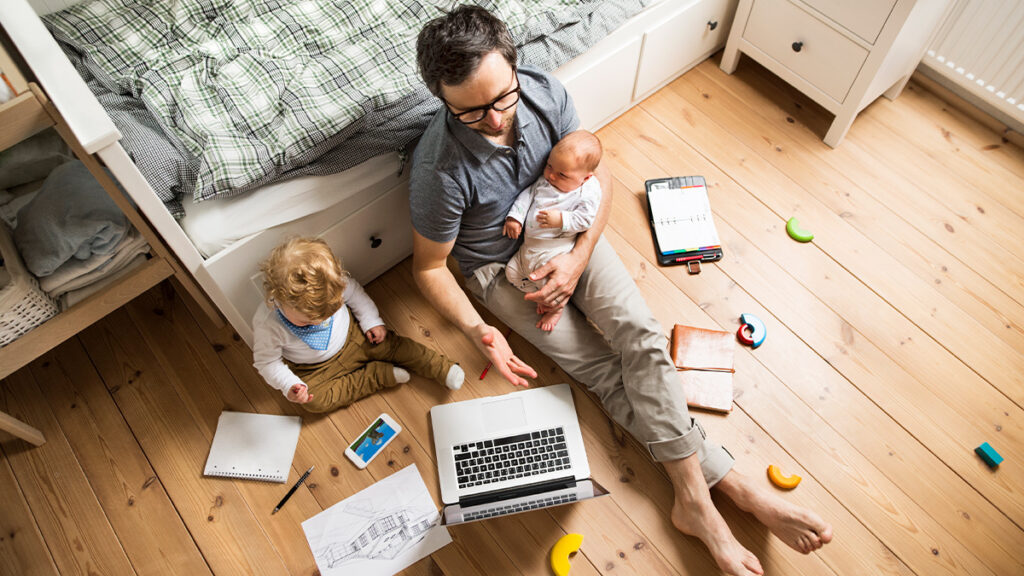Among other things that COVID-19 has changed is where we go to do our work. In the midst of coronavirus pandemic, almost every company has implemented a voluntary or compulsory work-from-home (WFH) policy unless you’re an “essential worker.”
Suddenly our living rooms have been turned into our offices, a change that never even thought of let alone were prepared for. While some of us do have the experience of WFH, the experience of meeting clients and attending meetings over Zoom in our PJs, is a new phenomena? But well, here we are!
And now that we all are adapting to this new world order, here are five tips to help you excel in getting your work done and also maintaining your mental well-being:
1. Decide on a Workspace
So yeah, we get it that the entire home is your abode and you can sit and work from anywhere you want, but keep this in mind: if you really want to stay mentally focused designating a specific area as your workstation can make you more productive. It can be any spot in the home that offers privacy, and if that spot has a lot of natural light, it’s a win-win. Also, if most of the work you do remotely requires you to make calls (voice or video) making sure that there’s no background sounds is also a consideration. Finally, think about picking a place in your home that offers a view outside so that you’re not just staring at a wall.
2. Get Out Of Those PJs
Okay, so this might sound irrelevant, but it’s really crucial. You don’t have to get all formally dressed but even the simple act of getting up and changing into anything but those clothes you just slept in is a signal that it’s time to get things done.
Getting dressed doesn’t only mean changing into a different outfit but also implies taking a shower, brushing your hair, and if needed, putting on makeup too! Nobody’s asking you to do office-level grooming, but taking care of yourself and your appearance goes a long way into self-care and it also might help you feel less cut-off from your “regular” life or the “real world.
Also, since it’s 2020 and Zoom calls/meetings are a common occurrence, your colleagues still can see you. So why show them your just-got-out-of-bed face when you can do better!
3. Set Boundaries. Define Working Hours and Stay Consistent
You have already designated your workstation. Now it’s time to define your working hours. You can get most of your work done productively if you stick with your regular hours. Treat weekdays as you did before the WFH culture. Plus, if you’re working on a team project, having the same schedule as your coworkers makes work both fun and easier.
However while you do this, please don’t start considering yourself as your own employee. If you have a fixed working schedule, stick to it. Don’t work in the evenings just because you’re free. Recognize when you’ve done enough and put work away. It’s important to recharge yourself so the next day can be as good if not better than the you’ve just had.
If you live with your family, establish boundaries so that they don’t distract or disturb you during your working hours just as they wouldn’t if you were physically in an office. And then when you’re done with your work, turn your full attention to your family. Creating a separate time and space will allow you to give your best on both the personal and professional front.
4. Take breaks
Remote working is more challenging than the traditional offices because you can easily lose track of time. It’s important to get up from your chair every hour and just take five minutes to walk around. In a traditional office environment you can chat with a co-worker for a while or take a lunch break, but at home you might have to have to force yourself to step away from your desk. But do make sure you do it because it really is good for you. One survey found that taking a lunch break helped nearly 90% of American workers feel refreshed and recharged to get back to work.
So, do yourself a favor and take that break!
5. Create The Work Transitions
Our morning commute not only got us to work, but it also prepared our brain for work. Now that you’re not traveling anymore (your bed to the desk doesn’t count) how do you tell your mind it’s time to work?
List the things that you did on your commute. Did you read or listen to music or get a coffee while on your way to work? Well, who said you can’t do that at home before starting work! Take some extra time before sitting down at your desk and in a workout at home or at a park. You can spend some time having breakfast with your housemates or can play with your pet.
Similarly, the evening commute prepared your mind to push the reset button to help you transition back into your personal life. Give yourself that transition as you log out of work. Go outside for a walk or listen to some music. Do things that help your brain process that the working hours are over, and it’s time to relax till the next day.

